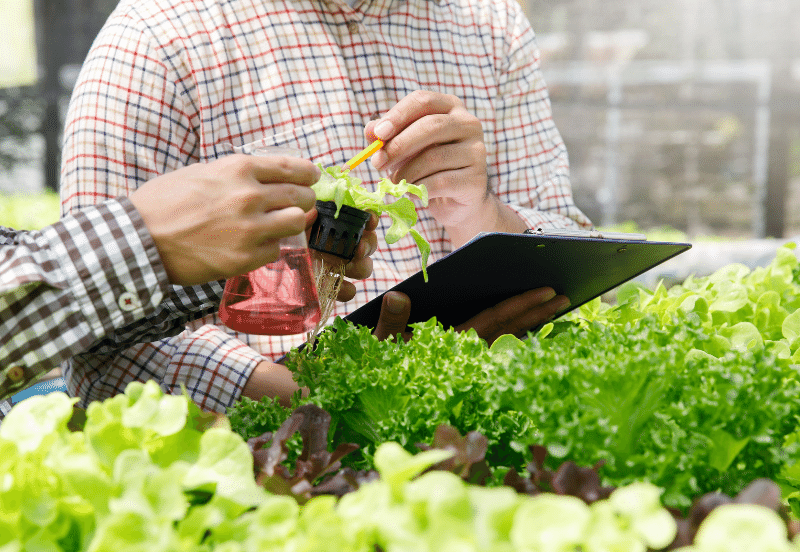Soil Health and Fertilization Strategies for Greenhouse Plants
Greenhouses provide a controlled environment for cultivating plants, allowing for optimal growth and yield. However, one of the key factors that determine the success of greenhouse plant cultivation is soil health and proper fertilization. Soil serves as the foundation for plant growth, providing essential nutrients and support. In this blog, we will delve into the importance of soil health and effective fertilization strategies for greenhouse plants.
The Significance of Soil Health
Understanding Soil Composition
Healthy soil is a complex ecosystem comprising minerals, organic matter, water, air, and microorganisms. The composition of the soil directly influences its ability to support plant growth. In a greenhouse setting, maintaining the right balance of these components is essential for achieving optimal results.
Impact on Plant Growth
Soil health significantly affects plant growth and development. Nutrient availability, water retention, and root aeration are all influenced by the condition of the soil. Unhealthy soil can lead to stunted growth, poor yields, and increased susceptibility to diseases.
Fertilization Strategies for Greenhouse Plants

Soil Testing and Nutrient Analysis
Before implementing a fertilization strategy, it’s crucial to perform a soil test and nutrient analysis. This helps in understanding the current nutrient levels in the soil and identifying any deficiencies. Based on the results, a targeted fertilization plan can be devised.
Balanced Fertilization
Balanced fertilization involves providing plants with the right proportion of essential nutrients. The primary nutrients include nitrogen, phosphorus, and potassium, while secondary nutrients and micronutrients are also important. Greenhouse growers often use commercial fertilizers or compost to supplement the soil’s nutrient content.
Controlled-Release Fertilizers
Controlled-release fertilizers are designed to gradually release nutrients into the soil over an extended period. These fertilizers are particularly useful in greenhouse environments as they provide a steady supply of nutrients to the plants, reducing the risk of over-fertilization and nutrient leaching.
Organic Fertilization
Organic fertilizers, such as compost, manure, and bone meal, offer a natural and sustainable approach to enhancing soil health. They improve soil structure, promote beneficial microbial activity, and release nutrients slowly over time.
Hydroponic and Soilless Systems
In some greenhouse setups, hydroponic and soilless systems are employed. These systems deliver nutrients directly to the plant roots through nutrient-rich water solutions. While they eliminate the need for traditional soil, proper nutrient management remains crucial for successful plant growth.
Conclusion
Healthy soil and effective fertilization strategies are fundamental to the prosperity of greenhouse plants. By maintaining soil health and implementing appropriate fertilization techniques, greenhouse growers can ensure robust plant growth, high yields, and overall crop success. Whether through balanced fertilization, controlled-release fertilizers, organic approaches, or innovative soilless systems, the key is to tailor the strategy to the specific needs of the plants and the greenhouse environment.
Frequently Asked Questions FAQs
1: How often should I fertilize my greenhouse plants?
The frequency of fertilization depends on factors such as the type of plants, the growing medium, and the fertilizer used. Generally, a regular schedule of fertilization, supplemented by soil testing, is recommended.
2. Can I use regular garden soil in a greenhouse?
It’s not advisable to use garden soil directly in a greenhouse. Garden soil might contain pathogens and weed seeds that can harm greenhouse plants. Using a sterilized growing medium or a soilless mix is a better choice.
3. What is the risk of over-fertilization?
Over-fertilization can lead to nutrient imbalances, toxicity, and damage to plant roots. It can also contribute to water pollution due to nutrient runoff. Controlled-release fertilizers and proper nutrient monitoring can help mitigate this risk.
4. Are organic fertilizers better than synthetic ones for greenhouse plants?
Both organic and synthetic fertilizers have their advantages. Organic fertilizers improve soil structure and microbial activity, while synthetic fertilizers provide precise nutrient control. The choice depends on the specific goals and preferences of the grower.
5. Can I reuse the growing medium in the greenhouse?
Yes, many growers recycle or reuse growing mediums to reduce costs and environmental impact. However, proper sterilization and nutrient replenishment are necessary before reusing the medium to avoid disease and nutrient deficiencies.
Remember, successful greenhouse plant cultivation is a combination of knowledge, observation, and adaptation. By prioritizing soil health and employing effective fertilization strategies, you can create an environment that fosters thriving and productive plants.




